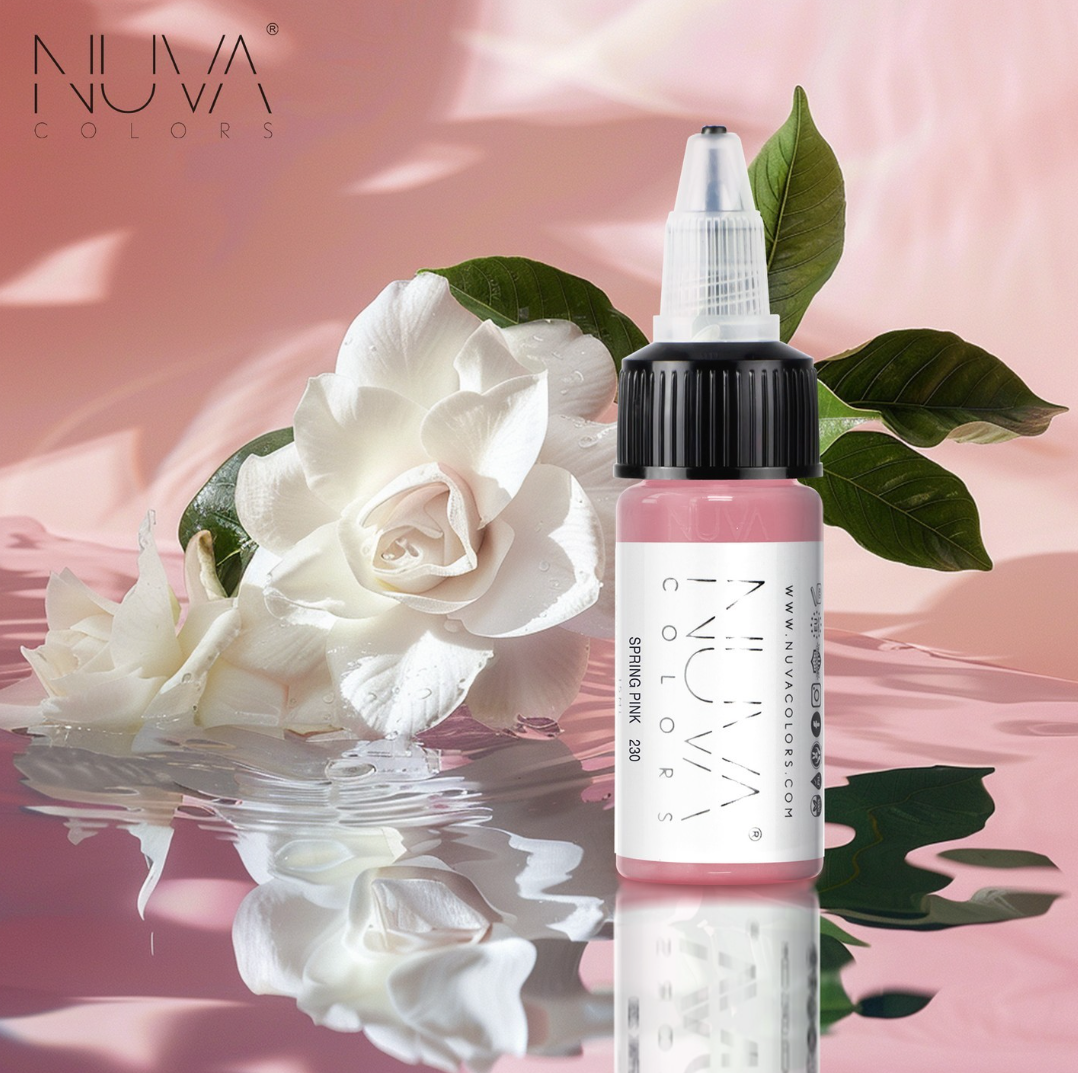
Oct 04 , 2024
The Impact of Skin Undertones on PMU Pigment Selection
Nuva Colors Presents: Mastering Pigment Selection Through Skin Undertone Analysis
Introduction
In the world of Permanent Makeup (PMU), the key to achieving natural and satisfying results lies in the art of pigment selection. One of the most critical factors influencing this choice is the client's skin undertone. Understanding and identifying skin undertones can significantly enhance the outcome of PMU procedures, ensuring that the pigments harmonize with the client's natural complexion. This article delves into the importance of skin undertones in PMU pigment selection and offers practical guidance for artists aiming to perfect their craft.
What Are Skin Undertones?
Skin undertones refer to the subtle hues beneath the skin's surface that affect its overall color. Unlike skin tone, which can change with sun exposure or conditions like rosacea, undertones remain consistent throughout a person's life.
- Warm Undertones: Skin has hints of yellow, golden, or peach hues.
- Cool Undertones: Skin contains subtle blue, pink, or red hues.
- Neutral Undertones: A balance between warm and cool undertones, sometimes appearing olive.
Why Skin Undertones Matter in PMU
Selecting pigments without considering the client's skin undertone can lead to undesirable results such as ashy eyebrows, unnatural lip colors, or pigments that heal to unexpected shades. Matching the pigment to the skin's undertone ensures:
- Natural-Looking Results: Pigments blend seamlessly with the skin.
- Longevity of Color: Reduces the risk of pigments fading to unwanted hues.
- Client Satisfaction: Increases the likelihood of meeting or exceeding client expectations.
Identifying a Client's Skin Undertone
Accurate assessment of skin undertones is the first step in effective pigment selection.
-
Vein Test
- Look at the veins on the inside of the wrist.
- Blue or Purple Veins: Indicate cool undertones.
- Greenish Veins: Suggest warm undertones.
- Blue-Green Veins: May imply neutral undertones.
-
Jewelry Test
- Determine whether gold or silver jewelry looks better on the client.
- Gold Jewelry: Flatters warm undertones.
- Silver Jewelry: Complements cool undertones.
- Both: Suits neutral undertones.
-
White Fabric Test
- Hold a pure white cloth next to the client's face.
- Skin Appears Yellowish Next to White: Warm undertones.
- Skin Appears Pinkish or Rosy: Cool undertones.
- Skin Doesn't Change Much: Neutral undertones.
Pigment Selection Based on Skin Undertones
-
For Warm Undertones
- Eyebrows: Opt for pigments with golden or honey hues.
- Lips: Choose warm shades like coral, peach, or warm reds.
- Eyeliner: Brown or bronze shades enhance warmth.
-
For Cool Undertones
- Eyebrows: Select pigments with ashy or taupe tones.
- Lips: Use cool pinks, berry shades, or bluish reds.
- Eyeliner: Black or charcoal shades work best.
-
For Neutral Undertones
- Eyebrows: Neutral brown pigments are ideal.
- Lips: Versatile shades that are neither too warm nor too cool.
- Eyeliner: Both brown and black shades can be flattering.
Common Challenges and How to Overcome Them
-
Mixed Undertones
- Some clients may display characteristics of both warm and cool undertones.
- Solution: Choose pigments that are balanced and avoid extremes.
-
Hyperpigmentation and Melanin-Rich Skin
- Darker skin tones can present unique challenges.
- Solution: Use pigments formulated for melanin-rich skin to prevent ashy results.
-
Color Shifting Over Time
- Pigments can change due to skin chemistry and external factors.
- Solution: Educate clients on aftercare and schedule touch-ups as needed.
Case Studies
-
Case Study 1: Cool Undertone Eyebrow Correction
- Issue: Client with cool undertones had eyebrows that healed to a warm, reddish color.
- Solution: Applied an ashy brown pigment to neutralize warmth, resulting in a more natural look.
-
Case Study 2: Warm Undertone Lip Enhancement
- Issue: Warm undertone client desired lip pigmentation that appeared too cool.
- Solution: Chose a warm coral pigment, enhancing the natural warmth of her complexion.
Tips for PMU Artists
-
Conduct Thorough Consultations
- Spend time assessing the client's skin undertone using multiple tests.
- Discuss the client's expectations and preferences.
-
Use High-Quality Pigments
- Invest in pigments like those from Nuva Colors, which offer a wide range tailored to different undertones.
-
Continued Education
- Stay updated on the latest PMU techniques and color theory advancements.
Conclusion
Understanding the impact of skin undertones on PMU pigment selection is essential for any artist aiming to deliver exceptional results. By accurately identifying undertones and selecting corresponding pigments, you enhance the natural beauty of your clients and build a reputation for excellence.
Elevate your PMU artistry with Nuva Colors' extensive range of pigments designed to complement every skin undertone. Visit our website to explore our collection and find the perfect shades for your clients.
Paul Park
Nuva Colors
Part 2: Launching Your PMU Business
References
- Society of Permanent Cosmetic Professionals (SPCP). Understanding Skin Undertones in Permanent Cosmetics. Retrieved from https://www.spcp.org
- American Academy of Micropigmentation (AAM). Color Theory for PMU Artists. Retrieved from https://www.micropigmentation.org
- Nuva Colors Pigments. Pigment Selection Guide. Available at https://www.nuvacolors.com
- Jones, A. (2018). Color Theory and Application in Permanent Makeup. PMU Professional Journal.
- Davis, M. (2019). Advanced Techniques in Cosmetic Tattooing. Beauty Arts Publishing.
- International Journal of Cosmetic Science. (2020). Pigment Interaction with Skin Undertones. 42(5), 555-562.
- European Society of Tattoo and Pigment Research (ESTP). Pigment Compatibility with Skin Undertones. Retrieved from http://www.estpresearch.org
- Smith, L. (2017). Mastering Pigment Selection in PMU. Aesthetic Practitioner.
- Occupational Safety and Health Administration (OSHA). Guidelines for Safe Cosmetic Procedures. Retrieved from https://www.osha.gov
- Taylor, R. (2016). The Art of Color Matching in Micropigmentation. Micropigmentation Today.






